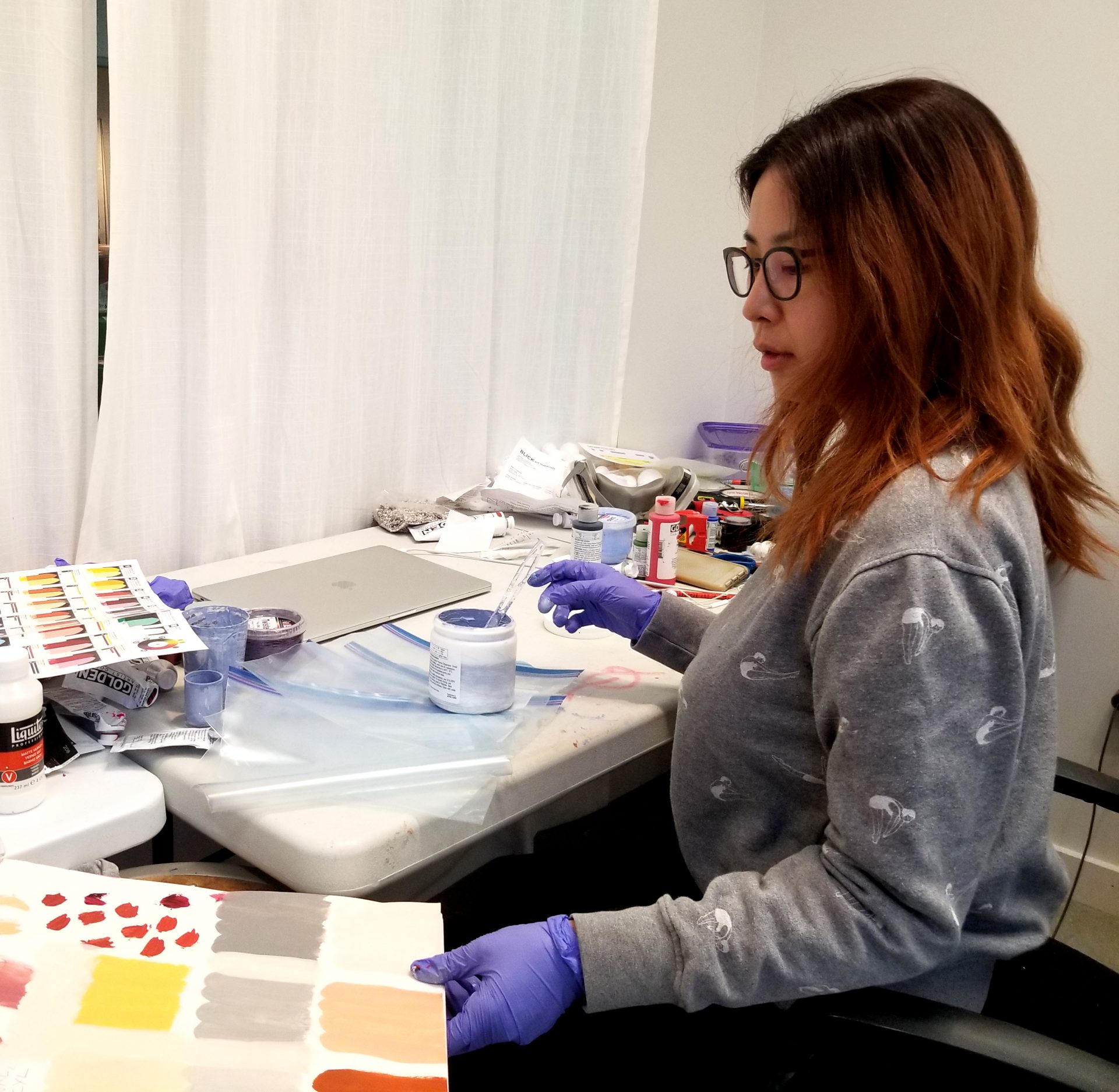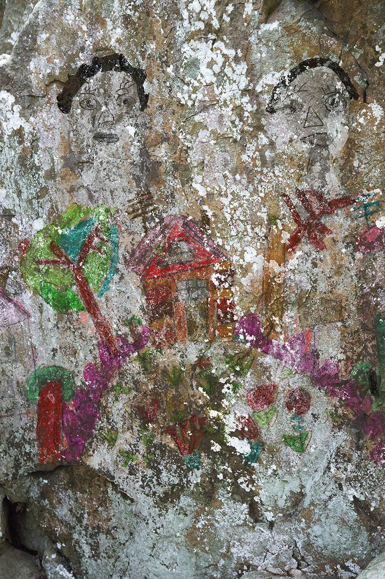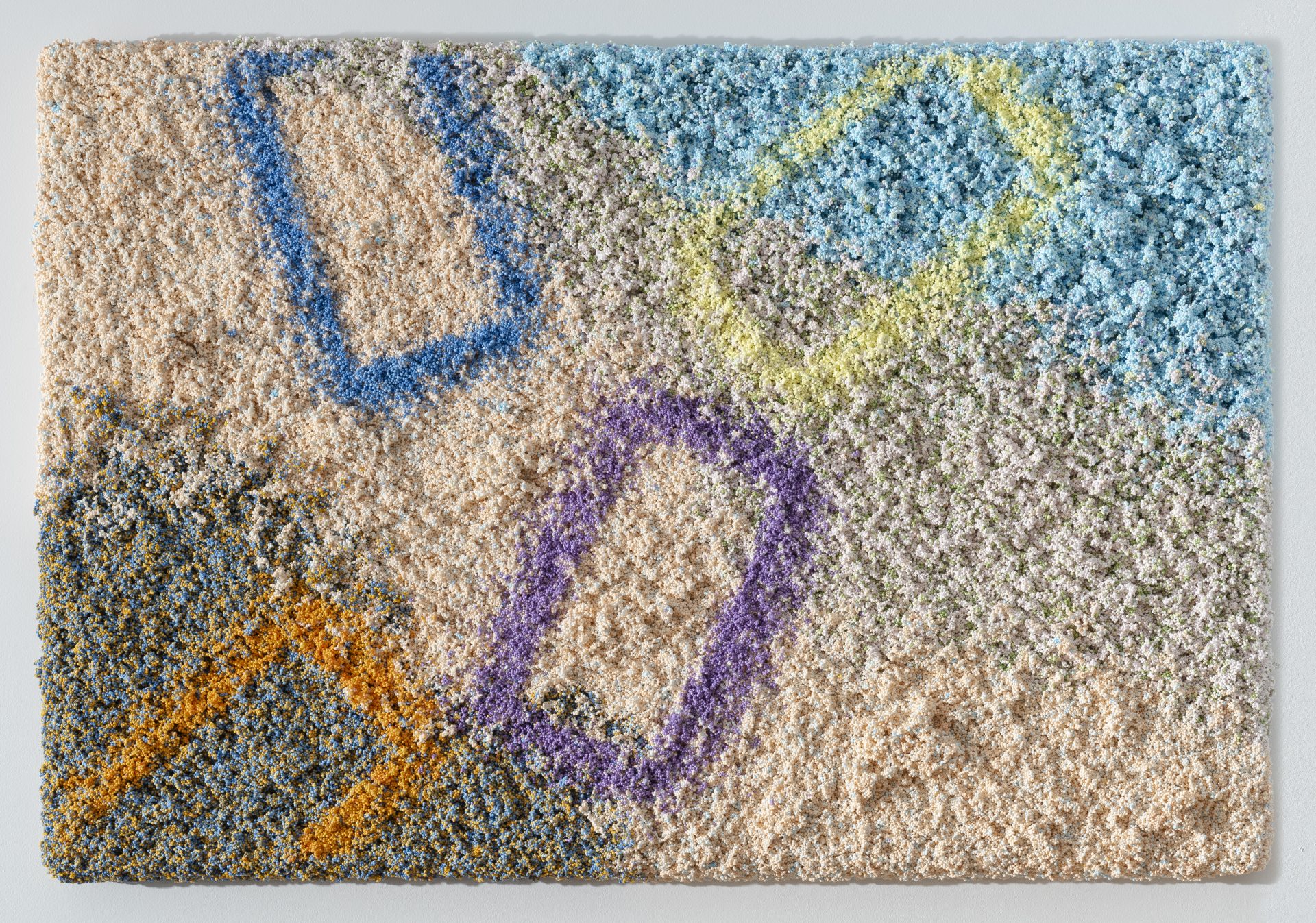
Interview with Nara Park
VisArts Studio Fellow
September 13, 2019
By Iona Nave Griesmann
“My work investigates our relationship to the landscape we live in and the imprint we leave in it when we are gone.
Stone is often used to commemorate the dead: it is a symbol of strength, stability and permanence. After witnessing the death of a loved one and experiencing grief, I began to ponder mortality and the desire for permanence. What I realized was nothing is permanent. Even rocks get worn away by wind and water, and eventually disappear. My use of materials reflects the fact that what we perceive to be permanent is actually ephemeral. In my work, I explore how far I can push the boundaries of imitations in order to inspire reverence and respect for its visual effect. I do not aim to trick the viewer with the faux, but rather generate life from it.
Most of my sculptures are hollow inside in order to emphasize that there is a void under the surface of a monumental structure. Opposing states coexist: hollowness inside bulkiness, physical lightness inside visual heaviness, and immanence within emptiness. They are only surfaces, yet they may be more than that.”
Your artist statement says that your goal is “not to deceive, but rather generate life from faux.” Would you like to elaborate on what this statement means?
I often use deceiving materials and try to emphasize the false aspect of them. For example I have made a waterfall out of stone printed boxes, but the pixels of the prints are magnified. The viewer knows they are prints, not real stone. I don’t try to trick the viewer’s eye, rather I try to generate life from what is not alive, or what is not real.
Why do you choose to use fake materials instead of real ones?
I am interested in something that’s beyond our visual perception. Although my materials are not authentic, by using them for my art, my art has its own life.
It’s an emphasis on what is impermanent?
Yes, and our desire for permanence. Our desire for life.
Your work has an aesthetic of being very fragmented. How does this decision emphasizes the message of your work?
It’s about preserving vulnerability and accepting the vulnerable side of the physical world. It goes back to impermanence.
By making your projects appear heavy while they consist of light materials, it sends a message about actual fragility?
The fragility of life. Not in a negative way but being comfortable with it, or embracing the temporality of life. My work is not necessarily visually disturbing. I try to make it look aesthetically pleasing, but there is a destructive side of it as well. It has a duality.
How has your work changed or evolved from where you started, to what you are making in the present? What things are different, and what things are similar?
I used to be very interested in the spectacle of installation art. I used to make a lot of kinetic sculptures like a waterfall, or a gigantic moving tower. I think now I’m more interested in more basic forms of sculpture. Instead of adding a lot of elements I’m more interested in simple forms. Not like minimalism, but I try to subtract unnecessary elements. Just to be more simple while opening the door to more possibilities by being simple.
In your bio, you describe how after the event of your father’s passing you went through a dramatic alteration on your perception of life. Would you be willing to share more about this perceptive shift?
I’m curious about the relationship between the world we live in, and the world that we may not see. I don’t want my work to be religious, but I’m curious about where my father is right now.
Amidst all the emotions you felt during that period of struggle, how were you able to take the emotions you were feeling, and use them to evolve your artistic practices?
It took me a really long time to accept it. Normally I don’t share my personal emotions or stories with other people, and I used to be a very introverted person. It’s been more than 10 years so it took a really long time to open up, and share those stories when I talked about my work. Sharing my story really helped me overcome the grief. My emotional weight got lighter after I started to share it. Making art really helped me heal and explore my curiosity in a positive, meaningful way. I’m grateful I can make art and share my story with other people.
Would you say you began your process of healing, after making your first work since your fathers passing?
Not even after the first work, but maybe when I started to create works with fragments of materials, such as for my series Flux, Shatter, and Disillusioned. The process of breaking the materials helped me face and accept what I went through. Around the time I made those works I was able to feel better about it, but before that I was kind of at a loss. I still made art in the same theme, but I didn’t necessarily share what I was doing.
On your website, some of the earlier works you show employ colors of brown, grey and black. As your work progresses to more recent pieces, your work begins to employ more bright neon colors. Can you tell me more about this shift in choice of color?

Do Not Step on the Flowers, Nara Park, 2018, Digital Print on Canvas, 50×75 Inches
As the process of sharing my story, and making fragmented pieces helped me heal much of my grief, I started to approach my work in a happier, more positive way. Color is one of the most important elements of art that can evoke our emotions. I want to explore a wider range of colors for my work in the future.
That’s what came to mind looking at your Enduring Marks series. It looked more innocent, or younger in a way.
The Enduring Marks series is a collage of photographs of rocks that I took last year and my childhood drawings. I was interested in how our childhood memories are embedded in us and how they shape who we are. Although physical things have a life span, memories can last in us. That’s why I started to incorporate my childhood drawings to explore memories.
I also wanted to ask about your series, Traces I-III, which seems to stand out from your other works. It looks simpler, more colorful, and it has a rougher texture. Would you like to share more about the theme of this series?

Traces II, Nara Park, Styrofoam beads, Acrylic paint, 48.5 x 32 x 3.5 inches
The Traces series is inspired by traces of tombstones, but the viewer doesn’t need to know that they come from my observation of cemeteries. It’s a continuation of exploration on monumentality. By using Styrofoam beads I wanted to create a disintegrating, or pixelated surface. When the viewer gets close to it, they will notice that the marks are not created with paint, but actually Styrofoam beads.
What materials do you feel hold the most significance in your work? Without these materials, how would the meaning of your work change?
I don’t have a specific preference. I try not to limit myself and I always look for something new to use, so I don’t have a specific material that is important to me. As long as I can visualize my idea, I’m very open.
How do you implement the philosophy of your artwork into your daily life?
As I’m interested in the meaning of authenticity, I question my surroundings of its authenticity. When I see an object, material, or even people I think about whether they are authentic or not. If they are people I meet, I think about if this person is genuinely nice. It’s my natural curiosity. I question if an object is made of a material pretending to be something else than what it is, or if a person is pretending to be nice or happy.
Is there any work you’ve done on your website that stands out to you the most? Or a piece of work that represents a pivotal moment in your artistic journey?
My favorite work is It Was Written On the Wall. It is an installation that visitors can crawl into and lie down. I installed a humidifier behind the wall inside the installation. Through the vent on the wall, mist comes out. It makes the paper boxes soft because of the humidity. It feels like a morgue, but then you realize it’s made of paper boxes. This is my favorite work because it is one of my earliest works. I made it when I was in graduate school. I was not afraid to try anything at that time, and I don’t want to lose that kind of mindset. As an artist I want to keep trying new things.
Thank you for speaking about your work with us Nara!
To see more of Nara’s work, visit https://naraparkstudio.com/
This interview was conducted by Iona Nave Griesmann, a Visarts 2019 Intern. They specialize in illustration and painting, and are majoring in Graphic Design and Illustration at Montgomery College.
